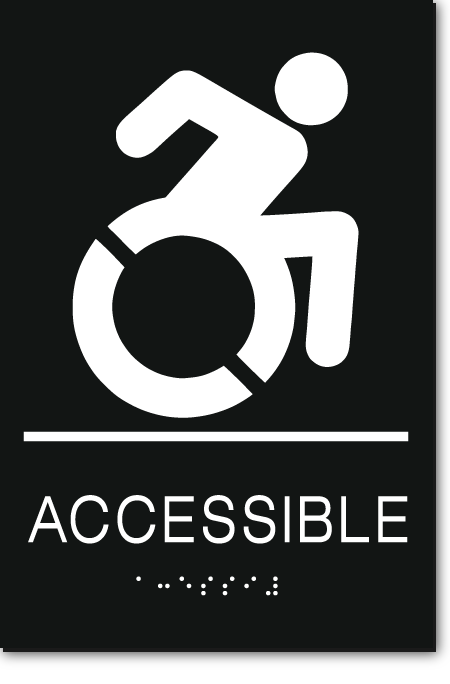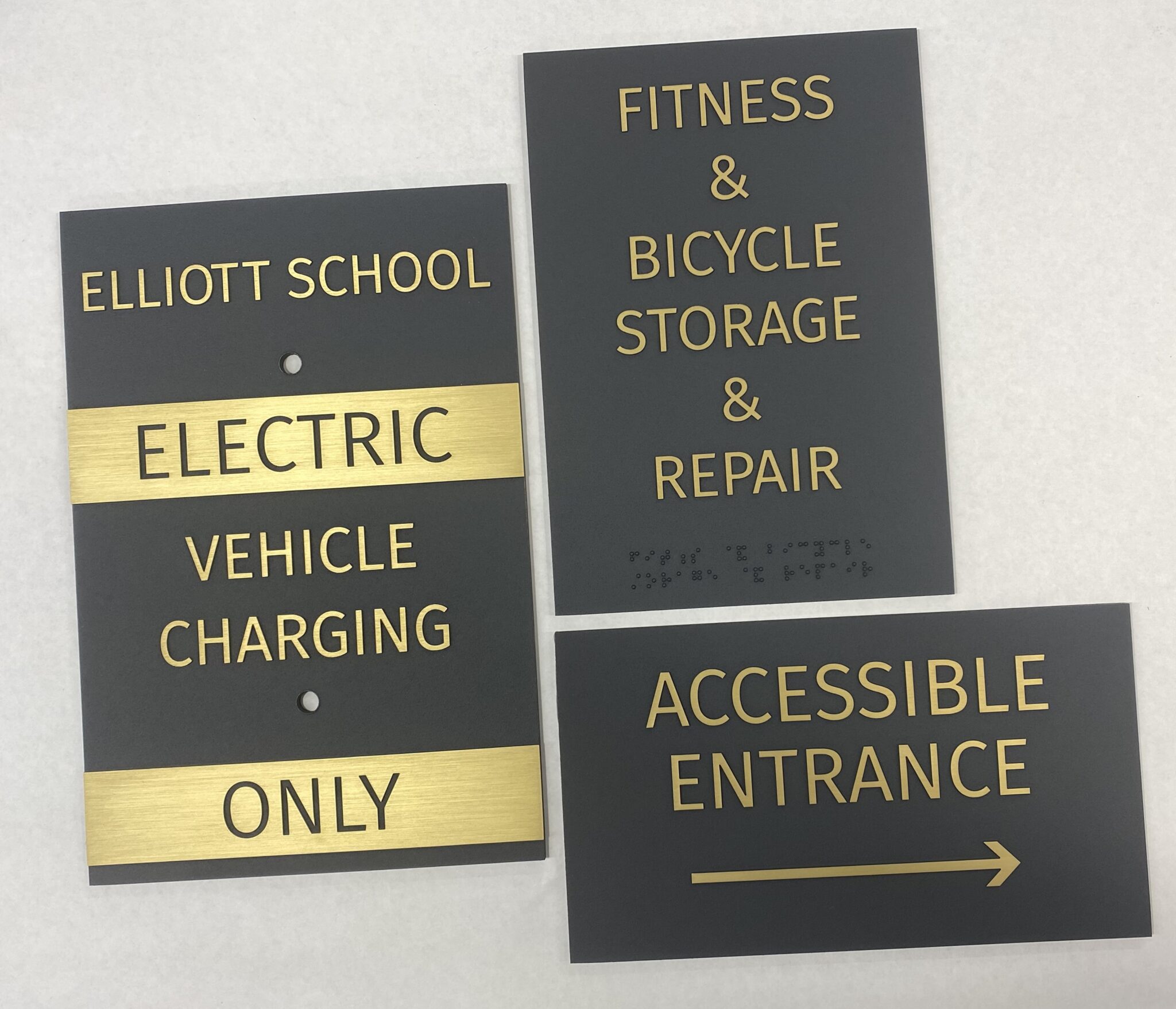A Comprehensive Overview to Selecting the Right ADA Signs
A Comprehensive Overview to Selecting the Right ADA Signs
Blog Article
Discovering the Key Attributes of ADA Indicators for Enhanced Availability
In the realm of access, ADA indications offer as quiet yet effective allies, ensuring that spaces are accessible and inclusive for people with impairments. By incorporating Braille and tactile aspects, these indications damage barriers for the visually damaged, while high-contrast color plans and legible font styles cater to diverse visual requirements. In addition, their calculated positioning is not approximate but instead a computed effort to assist in seamless navigation. Beyond these attributes exists a much deeper story regarding the advancement of inclusivity and the continuous dedication to producing equitable spaces. What much more could these indicators signify in our quest of global access?
Significance of ADA Conformity
Making sure compliance with the Americans with Disabilities Act (ADA) is crucial for cultivating inclusivity and equivalent accessibility in public rooms and workplaces. The ADA, established in 1990, mandates that all public facilities, companies, and transport services suit individuals with handicaps, guaranteeing they take pleasure in the same rights and possibilities as others. Conformity with ADA standards not just satisfies lawful obligations however likewise boosts an organization's track record by showing its dedication to diversity and inclusivity.
One of the key facets of ADA compliance is the application of accessible signs. ADA indications are made to guarantee that people with specials needs can conveniently browse with buildings and spaces.
In addition, sticking to ADA policies can minimize the risk of possible fines and lawful effects. Organizations that fall short to abide by ADA standards may encounter lawsuits or fines, which can be both economically difficult and damaging to their public image. Thus, ADA conformity is essential to cultivating a fair environment for everybody.
Braille and Tactile Components
The unification of Braille and tactile elements right into ADA signage embodies the concepts of ease of access and inclusivity. It is commonly put below the corresponding message on signage to make certain that individuals can access the information without aesthetic aid.
Tactile elements expand past Braille and consist of raised characters and symbols. These parts are designed to be noticeable by touch, enabling individuals to determine area numbers, washrooms, leaves, and other important locations. The ADA sets specific standards regarding the size, spacing, and placement of these tactile components to enhance readability and ensure consistency throughout various atmospheres.

High-Contrast Shade Plans
High-contrast color design play a crucial duty in boosting the visibility and readability of ADA signage for individuals with aesthetic disabilities. These plans are necessary as they make the most of the distinction in light reflectance between message and background, making certain that signs are conveniently discernible, even from a range. The Americans with Disabilities Act (ADA) mandates making use of certain color contrasts to accommodate those with minimal vision, making it an essential facet of conformity.
The efficiency of high-contrast colors depends on their capacity to stick out in various lights conditions, including poorly lit environments and areas with glare. Normally, dark message on a light background or light text on a dark history is employed to achieve optimum comparison. For circumstances, black text on a white or yellow history provides a plain aesthetic difference that assists in fast recognition and understanding.

Legible Fonts and Text Dimension
When considering the layout of ADA signage, the browse around this web-site option of understandable font styles and appropriate message size can not be overstated. These aspects are crucial for ensuring that signs come to individuals with aesthetic impairments. The Americans with Disabilities Act (ADA) mandates that typefaces should be sans-serif and not italic, oblique, manuscript, very attractive, or of unusual type. These demands help make sure that the message is conveniently readable from why not try these out a distance which the personalities are appreciable to diverse audiences.
According to ADA guidelines, the minimum message elevation should be 5/8 inch, and it ought to increase proportionally with viewing distance. Consistency in text dimension adds to a natural aesthetic experience, assisting individuals in navigating atmospheres efficiently.
Moreover, spacing between letters and lines is indispensable to legibility. Ample spacing avoids characters from appearing crowded, enhancing readability. By sticking to these standards, developers can dramatically boost availability, making sure that signs offers its intended function for all individuals, no matter their visual capabilities.
Efficient Placement Approaches
Strategic positioning of ADA signs is crucial for making best use of availability and making certain compliance with lawful requirements. ADA standards state that indications ought to be mounted at a height between 48 to 60 inches from the ground to ensure they are within the line of sight for both standing and seated individuals.
Furthermore, indicators should be placed nearby to the latch side of doors to permit simple recognition before entry. Uniformity in indicator positioning throughout a facility boosts predictability, reducing confusion and enhancing general individual experience.

Final Thought
ADA indicators play a crucial function in advertising ease of access by incorporating functions that address the requirements of individuals with specials needs. These elements jointly cultivate an inclusive environment, emphasizing the importance of ADA compliance in making certain equivalent access for all.
In the world of availability, ADA indications offer as quiet yet powerful allies, guaranteeing that spaces are navigable and inclusive for people with disabilities. The ADA, enacted in 1990, mandates that all public centers, employers, and transportation solutions suit individuals with impairments, ensuring they delight in the same civil liberties and chances as others. ADA Signs. ADA indications are developed to make sure that people with disabilities can conveniently browse via structures and rooms. ADA standards state that indicators must be installed at a height straight from the source between 48 to 60 inches from the ground to ensure they are within the line of sight for both standing and seated individuals.ADA indicators play an essential function in promoting access by incorporating attributes that deal with the requirements of individuals with specials needs
Report this page